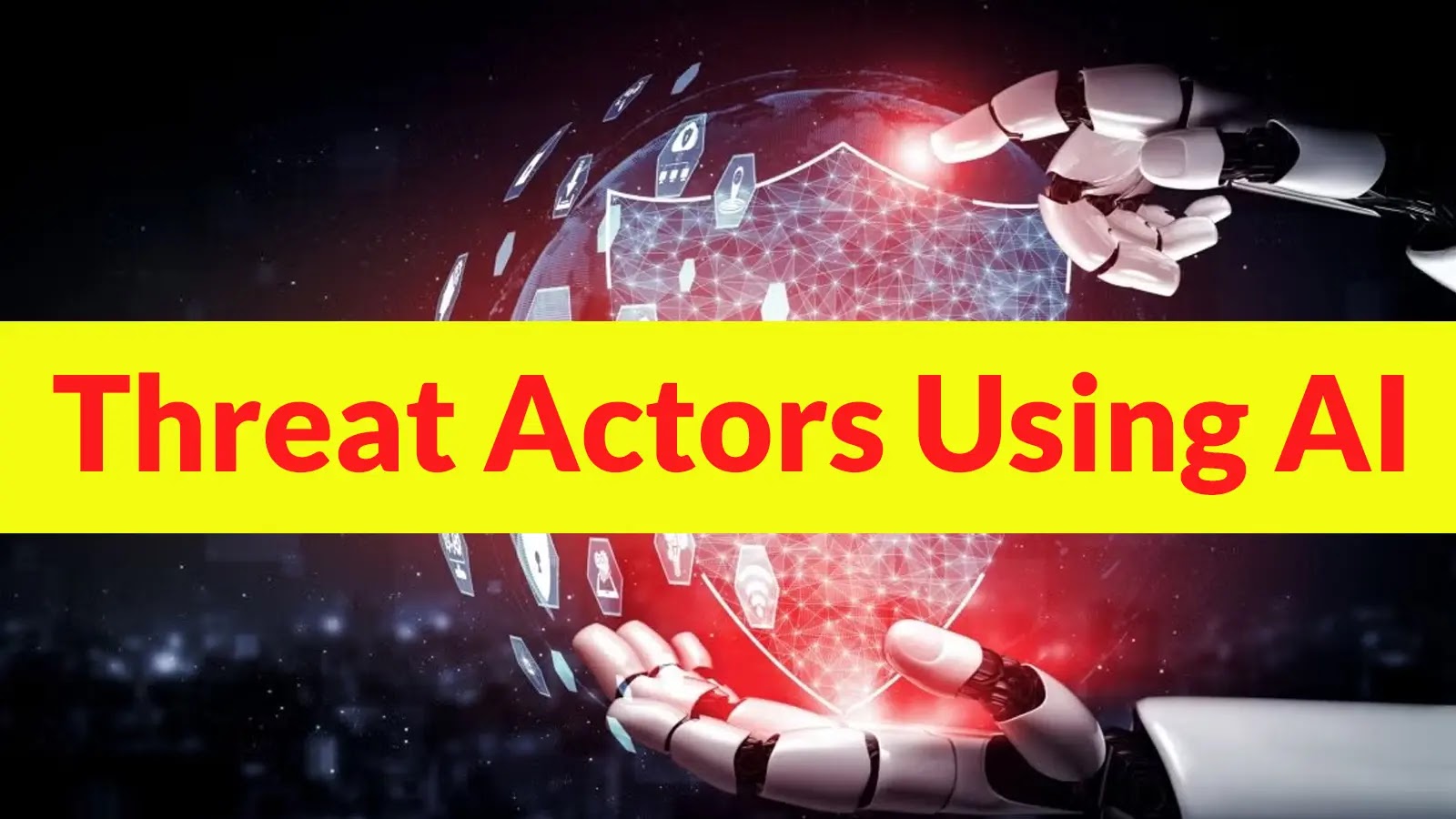
Threat Actors Using AI to Scale Operations, Accelerate Attacks and Attack Autonomous AI Agents
The cybersecurity landscape has undergone a radical transformation. Threat actors, no longer content with traditional methods, are aggressively weaponizing artificial intelligence to amplify their destructive capabilities and, perhaps more concerningly, target the very autonomous AI systems organizations rely upon. This isn’t a futuristic scenario; it’s our current reality. The integration of generative AI by adversaries is fundamentally reshaping the threat model, demanding a new level of vigilance and adaptive defense strategies.
The Escalation of AI in Cyber Warfare
Adversaries are now embedding generative AI technologies directly into their operational frameworks, moving beyond AI as a mere supplementary tool. This strategic shift, highlighted by the CrowdStrike 2025 Threat Hunting Report, signals a pivotal moment. The goal is clear: to scale malicious operations, accelerate attack cycles, and generate more convincing, sophisticated attacks at an unprecedented pace.
Consider the immediate implications. AI-powered phishing campaigns can craft hyper-personalized emails, making them virtually indistinguishable from legitimate communications. Malicious code generation, a tedious manual process, can now be automated, creating polymorphic malware variants that evade traditional signature-based detection. This efficiency drastically reduces the time from reconnaissance to execution, giving defenders less reaction time.
Autonomous AI Agents: The New Attack Surface
Beyond using AI to scale existing attacks, threat actors are increasingly setting their sights on autonomous AI agents themselves. These agents, designed to operate with minimal human intervention, represent a lucrative target. Compromising an autonomous AI agent could lead to:
- Data Poisoning: Feeding malicious data to an AI model, corrupting its learning process and leading to erroneous or harmful decisions. This could be particularly devastating in critical infrastructure or financial systems.
- Model Evasion: Crafting inputs specifically designed to trick an AI model into misclassifying data or taking incorrect actions, even if the model was trained on a robust dataset.
- Adversarial Examples: Generating subtle, often imperceptible perturbations to data that cause an AI model to make incorrect predictions. This could manifest in anything from voice recognition systems to autonomous vehicle navigation.
- Supply Chain Attacks on AI/ML Models: Infiltrating the development pipeline of AI models to introduce backdoors, vulnerabilities, or malicious components before deployment.
The potential for catastrophic consequences from such attacks cannot be overstated. Imagine an autonomous traffic management system being manipulated to create gridlock, or an AI-driven medical diagnostic tool providing false negative results.
AI-Powered Tactics, Techniques, and Procedures (TTPs)
The integration of AI empowers threat actors with enhanced TTPs across various attack phases:
- Reconnaissance and OSINT: AI can rapidly sift through vast amounts of open-source intelligence (OSINT) to identify vulnerabilities, employee information, and network architectures, far faster than human analysts.
- Exploitation: AI-powered vulnerability scanning and exploit generation tools can identify and weaponize zero-day vulnerabilities more efficiently. While not a specific CVE tied to an AI-driven exploit, the underlying vulnerabilities exploited by AI are numerous. For example, a common target could be an unpatched server susceptible to a known vulnerability like CVE-2023-2825, which could be identified and targeted at scale by AI.
- Payload Generation: Generative AI can create highly obfuscated and polymorphic malware variants, including ransomware and sophisticated trojans, making traditional signature-based detection increasingly ineffective.
- Social Engineering: AI-driven deepfakes, voice synthesis, and sophisticated natural language generation (NLG) enable hyper-realistic impersonations for phishing, vishing, and business email compromise (BEC) attacks.
- Evasion and Persistence: AI can analyze defensive measures in real-time and adapt attack patterns to bypass security controls, ensuring longer dwell times within compromised networks.
Remediation Actions and Proactive Defenses
Mitigating the threat of AI-powered attacks and protecting autonomous AI agents requires a multi-layered, proactive defense strategy:
- Robust AI Model Security: Implement strict security policies for AI/ML development pipelines (MLSecOps). This includes secure coding practices, regular vulnerability scanning of AI models and underlying infrastructure, and adversarial testing of models to identify weaknesses.
- Threat Intelligence and AI: Leverage AI-powered threat intelligence platforms to detect emerging AI-driven TTPs and anticipate evolving threats. This includes monitoring dark web forums for discussions on AI weaponization.
- Enhanced Anomaly Detection: Deploy AI-driven security solutions that can identify unusual patterns in network traffic, user behavior (UEBA), and system logs, which may indicate an AI-powered attack attempting to bypass traditional defenses.
- Zero Trust Architecture: Enforce the principle of “never trust, always verify” across all users, devices, and applications. This limits the lateral movement of AI-driven tools within a compromised network.
- Regular Patching and Vulnerability Management: Continuously identify and patch vulnerabilities not just in conventional software but also in AI frameworks, libraries, and the operating systems hosting AI agents. For instance, ensuring all systems are up-to-date against critical vulnerabilities like those found in commonly used open-source libraries, even if not directly AI-related, remains foundational.
- Security Awareness Training: Educate employees about the evolving nature of AI-powered social engineering attacks, including deepfakes and advanced phishing techniques.
- Incident Response Plan for AI Incidents: Develop and regularly drill specific incident response procedures tailored to AI-related compromises, including data poisoning and model manipulation.
Tools for AI-Driven Threat Detection and Prevention
| Tool Name | Purpose | Link |
|---|---|---|
| CrowdStrike Falcon Platform | Endpoint detection and response (EDR), extended detection and response (XDR) with AI-powered threat hunting. | https://www.crowdstrike.com/products/falcon-platform/ |
| IBM Security QRadar | Security Information and Event Management (SIEM) with AI for anomaly detection and behavior analysis. | https://www.ibm.com/security/security-intelligence/qradar |
| Microsoft Azure Sentinel | Cloud-native SIEM and SOAR (Security Orchestration, Automation, and Response) with AI analytics. | https://azure.microsoft.com/en-us/products/security/azure-sentinel/ |
| Darktrace AI Analyst | Autonomous response and enterprise immune system for AI-powered threat detection. | https://www.darktrace.com/products/darktrace-ai-analyst/ |
| OWASP Top 10 for LLM Applications | Guidance and risk identification for Large Language Model (LLM) applications. | https://owasp.org/www-project-top-10-for-large-language-model-applications/ |
The Inescapable Reality: Adapting to the AI Arms Race
The weaponization of AI by threat actors marks a significant escalation in cyber warfare. Organizations must recognize that AI is no longer just a defensive tool; it is an offensive force being wielded with increasing sophistication. The focus must shift to understanding how adversaries leverage AI to scale their operations, accelerate their attacks, and target the very autonomous systems designed to enhance efficiency. Proactive defense, robust AI model security, and continuous adaptation are no longer optional – they are critical for survival in this evolving threat landscape.





